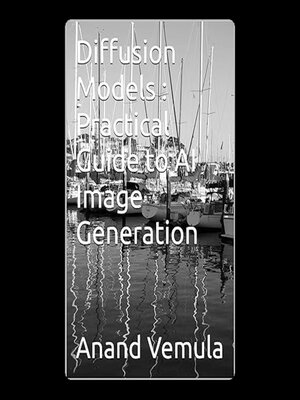
Sign up to save your library
With an OverDrive account, you can save your favorite libraries for at-a-glance information about availability. Find out more about OverDrive accounts.
Find this title in Libby, the library reading app by OverDrive.



Search for a digital library with this title
Title found at these libraries:
| Library Name | Distance |
|---|---|
| Loading... |
This audiobook is narrated by a digital voice.
This book delves into the fascinating world of diffusion models, a powerful tool in generative AI. It equips readers with the knowledge to understand how these models work, explore their applications, and stay informed about future advancements.
Part 1: Introduction
Chapter 1: Unveils the core concept of diffusion models. It explains how they work by adding noise to data and then learning to reverse the process, ultimately generating new, realistic outputs. The chapter also explores the various applications of diffusion models across diverse fields.
Chapter 2: Introduces the broader landscape of generative AI models and compares diffusion models with other popular approaches like VAEs and GANs. This helps readers understand the unique strengths of diffusion models.
Part 2: Deep Dive
Chapter 3: Dives deeper into the inner workings of diffusion models (optional for those without a strong mathematical background). It explores the concept of probability distributions and other key mathematical concepts that underpin these models.
Chapter 4: Explains the diffusion process in detail, including the step-by-step addition of noise and different diffusion model architectures (e.g., U-Net, DDPM).
Chapter 5: Explores how diffusion models learn to reverse the noise addition process. It delves into the training techniques and optimization methods used to achieve this remarkable feat.
Chapter 6: Explains how to use a trained diffusion model to generate entirely new data. It covers different strategies for initiating the sampling process and controlling the generation by providing prompts or specific styles.
Part 3: Applications and Beyond
Chapter 7: Showcases how diffusion models can be used for image editing tasks like inpainting (filling in missing parts) and style transfer (applying the style of one image to another).







